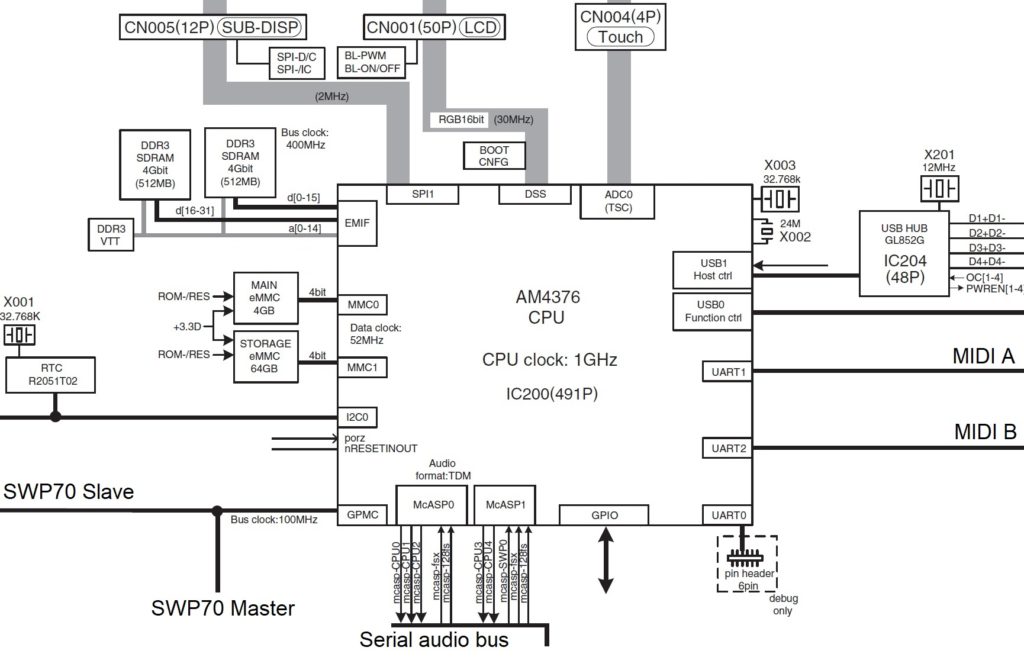After a long move and a hiatus from writing, it’s time to dig into digital design.
I get a little anxious when I see people speculating about the internal operation of synthesizers and arrangers. They often assume that:
- A keyboard instrument is organized just like a PC.
- Samples are streamed from some kind of magnetic or solid-state disk.
- The main CPU runs the tone generation software.
- Samples are held in the main CPU’s memory during tone generation.
These assumptions are not true for Yamaha Genos, Montage or MODX.
These musical instruments are organized internally like an embedded hardware device. Sure, there is a main computer inside, but it is an embedded processor with many input/output (I/O) interfaces integrated onto the same integrated circuit (IC). This kind of organization is often called an “SOC,” or “System on a chip.”
[Click on image to enlarge.]
The diagram (above) shows the main CPU in Yamaha Genos. It is a Texas Instruments AM4376 embedded ARM processor. You can see that it has many integrated I/O ports: two USB ports, three serial interface ports (UART), parallel digital pins (GPIO), serial audio (McASP), real-time clock (RTC), and display and touch panel ports. Of course, there are also RAM (EMIF) and bulk storage (MMC) interfaces, too. Finally, there is a 16-bit bus connecting the main CPU to the two Yamaha SWP70 tone generator chips.
Before moving into important details, here’s a few quick observations:
- The USB1 port connects to an internal 4-port USB hub. The hub provides external interfaces: TO DEVICE (front), TO DEVICE (bottom), USB TO DEVICE, and an internal wireless LAN module (UD-WL01).
- The USB0 port provides the external USB TO HOST interface.
- UART1 provides the 5-pin MIDI A data signals and and UART2 provides the 5-pin MIDI B data signals.
- Digital audio is transferred on an internal serial audio bus using time division multiplexing (TDM). Serial digital audio is 2 channel, 24-bit I2S compatible, allowing direct communication with the audio converters (ADCs and DACs)
Montage has a more extensive digital audio subsystem — one of the reasons why Montage supports studio-level audio conversion.
RAM capacity is modest: 512MBytes. The Linux operating system and Genos control software reside in this memory during operation. Suffice it to say, this is no where near enough to store samples for tone generation. Tone generation is handled by the SWP70 integrated circuits.
There are two embedded bulk storage memories: 4GBytes and 64GBytes. Linux boots from the 4GByte device. The 64GByte device provides the user expansion memory. Please note the data clock speed (52MHz) and data bus width (4 bits), which adhere to the eMMC protocol. There is enough bandwidth to support a single digital audio stream, but not near enough bandwidth for tone generation. I might add that the 100MHz 16-bit bus to the SWP70s is not enough bandiwdth either.
I hope this short article provides a bit of insight about the modest computational and memory resources of the Genos main CPU. When I get a chance, I’ll give a short tour of Genos’s tone generation section.
Source: Yamaha Genos Service Manual (Copyright Yamaha)
Copyright © 2019 Paul J. Drongowski

